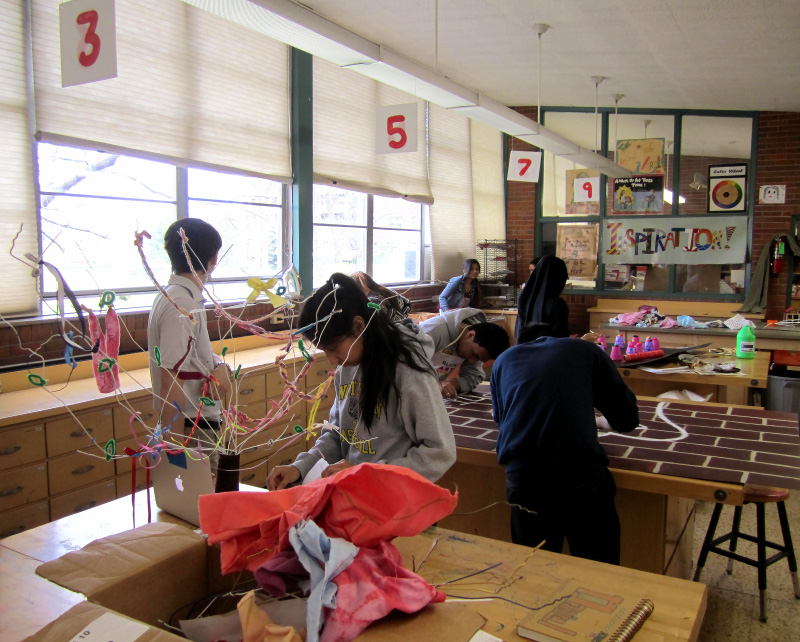Public Installation
High-school students collaborate to transform spaces in their school using repurposed materials.
By Jeanette Thompson
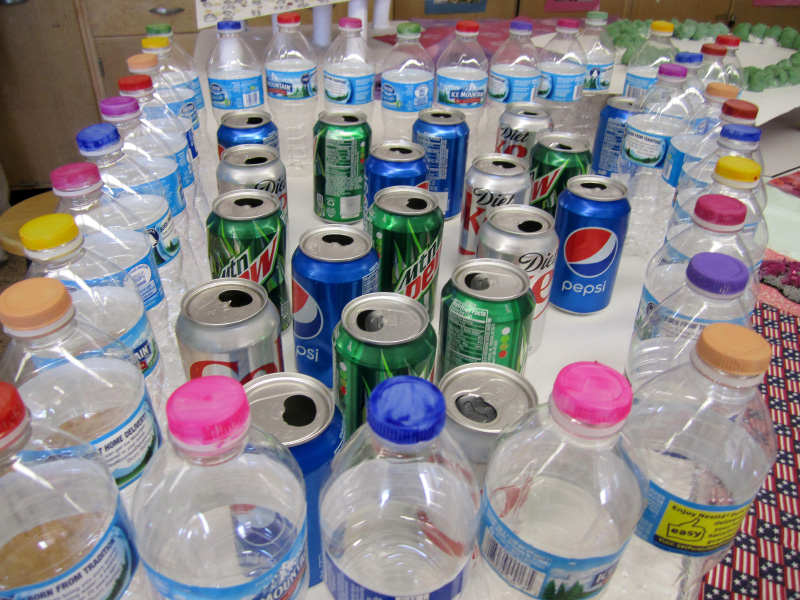
This project aimed to introduce my high-school Intro to Art students to installation art using fabric and repurposed materials. The unit began with students working in groups to construct a work of art that changed the perception of a space in the art room. Pieces had to be structurally sound, using a box of random materials from the art room. After this activity, students were introduced to installation art and several contemporary installation artists. We discussed each artist with the aim of getting students to observe and analyze the artists’ choices, and to talk about how they changed the perception of a space. Students were then given this challenge: Can you work with other artists to create a meaningful installation piece using fabric we dyed in class with found / repurposed materials to change the perception of a space in the school? Students self-selected their teams and got to work. After spending a period discussing the challenge criteria and the possibilities for what repurposed materials could be and where they could come from, teams started to brainstorm their installation ideas. Students selected their spaces and presented their concepts to the Assistant Principal to receive feedback, approval, and permission to use spaces in the school to create their installations.
After about two weeks of in-class work time to create their installations, students were allowed to move their work to their chosen locations. Students brought in repurposed materials and were allowed to ask me for any additional materials or tools they might need to assist them in the creation of the piece. Students could not block doorways or windows, could not use nails or damage any walls, so tape was the primary material used to adhere pieces. Once pieces were in place, students were sent out to write a critique of an installation by a group from another class. These critiques were later shared with the artists. We then went on a gallery walk to all the pieces and discussed them in-depth.
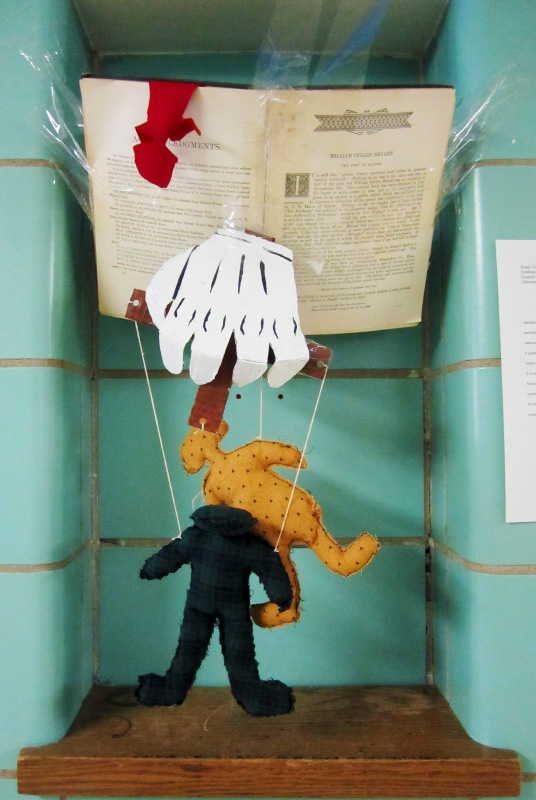
- To give my students the opportunity to work with other artists to create a meaningful installation piece, using fabric as well as found and repurposed materials to change the perception of a space in the school.
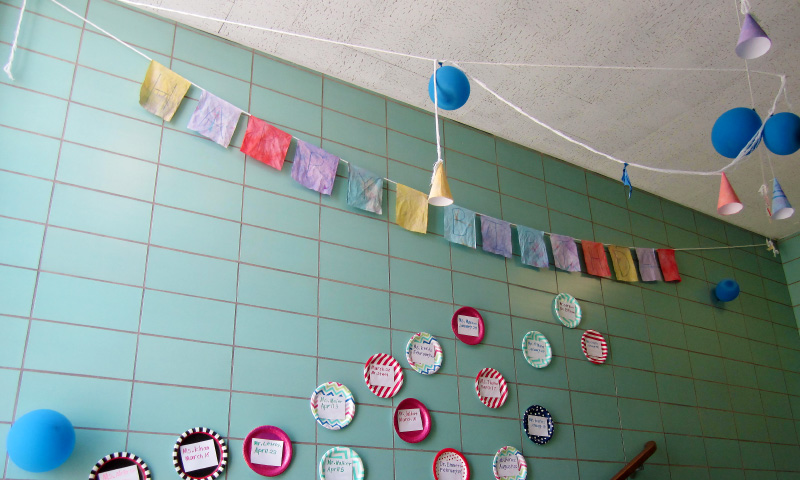
Documentation + Assessment Suggestions
I took photos throughout the process of creation, and students were asked to take 3 photos of their piece using a variety of angles to capture as much of the installation as possible.
Learning Activities
Investigate: The lesson began with putting students into groups of about four. Each group was given a box of random materials that would typically be available in an art classroom, such as, yarn, pipe cleaners, pieces of fabric, toilet paper and paper towel rolls, tape, etc. Students were challenged to work together to use the materials to change the perception of a space in the classroom.
Design: At first students struggled to get the concept of changing the perception of the space. Instead they began to make sculptural pieces on a table or counter. This led to a discussion and deeper explanation of the difference between something sculptural and something that changes the perception of a space. Light bulbs began to flicker as we talked about how the space of the room could be used with materials to change the perception of the space. In the end they created dynamic pieces that they wrote about based on a few prompts. Students worked in their teams to create an explanation for their installation, then presented them to the class.
Introduce: After this activity, students were introduced to installation art and several contemporary installation artists, such as Christo and Jeanne-Claude, Sarah Sze, Jim Hodges, Mike Kelley, and Mike Andrews. Each artist was discussed with the goal of getting students to observe and analyze each artist’s choices and to notice how they changed the perception of a space. This took place over one a one-hour class period.
Experiment: Next, students dyed pieces of muslin a light shade. They then used resist techniques to add visual interest to the dyed cloth. This took about a week. Information about using dyes can be found at this link. This lesson could also be completed with commercial fabric or with repurposed fabric or clothes.
Collaborate: After dying muslin, students were given this challenge: Can you work with other artists to create a meaningful installation piece using fabric we dyed with found and repurposed materials to change the perception of a space in the school? Students self-selected their teams and got to work. They could either work in a team of two, or in a group no larger than four. After spending a period discussing the challenge criteria and the possibilities for what repurposed materials could be and come from, students started to brainstorm their installation design.
Design: The next class period, students were allowed 15 minutes to find 3 optional spaces in or on the school grounds. They were required to take measurements, to take pictures with their phones, and to make sketches of the spaces in order to prepare a proposal for their installation. Students were required to select at least three spaces in case another group wanted the same space. Fortunately this was not an issue, as it was stressed to look for spaces that were not obvious (obvious meaning areas that every group might want, such as the gym lobby). Pieces had to be sturdy and well-constructed, as well as visually interesting.
Present: Students presented a rough draft of their idea to me, then had two class periods to work on creating their installation in class, to build on their concept, and to plan the implementation and installation of their work. The Assistant Principal was invited to class so students could present their project proposals to him and receive feedback and approval (along with permission to use spaces in the school) to create their installations.
Create: After about a week of in-class build / construction time, students were allowed to move their work to their chosen locations. Students brought in repurposed materials and were allowed to ask me for any additional materials or tools they might need to assist them in the creation of the piece.
Re-evaluate: After pieces were installed, the class took a gallery walk of the pieces and discussed whether they were indeed installations: Do they change the perception of the space, and what, if anything, could be done to make the pieces better?
Conclusion: Students filled in a group self-assessment and reflection about the process and the piece they created.
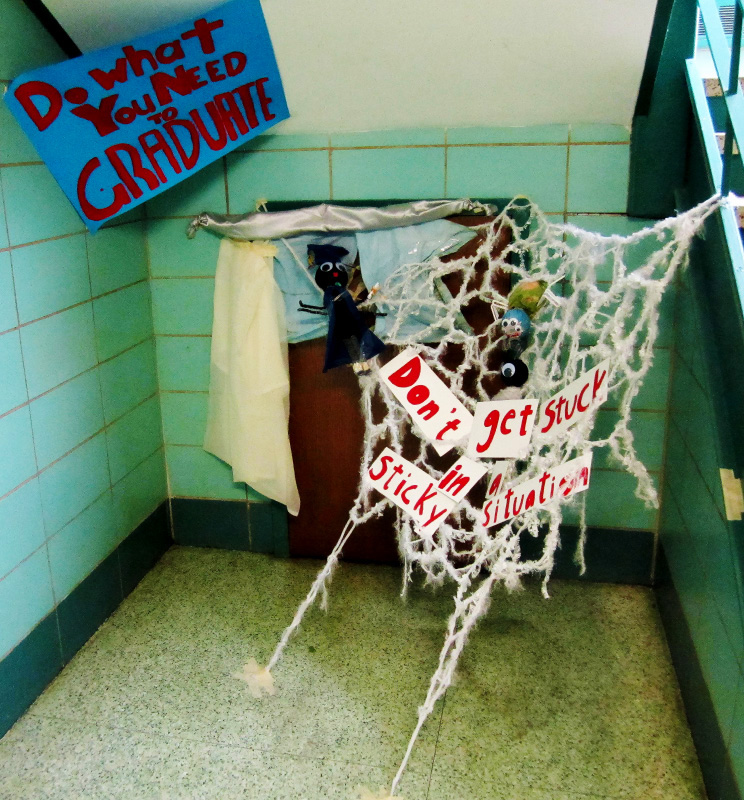
Materials + Supplies
Materials included basically whatever I had available in the art room and whatever repurposed materials students brought in.
Extensions
Extension Activity: I invited the humanities classes to do a gallery walk and critique of the pieces, and the teachers loved this idea. They created a worksheet for their classes and the students loved the experience.
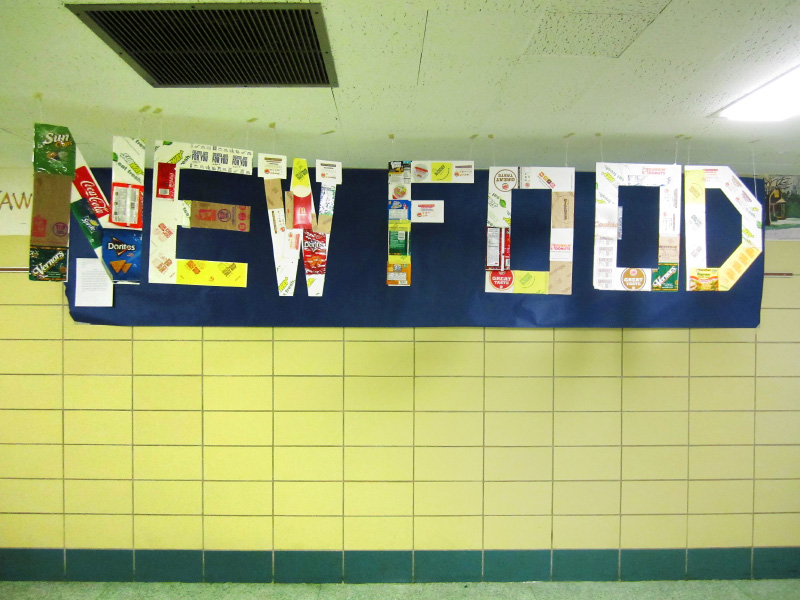
Resources
Contemporary Artist References:
Jeanette Thompson
CICS Northtown Academy
Jeanette Thompson has been teaching art for over 16 years. As an artist, she primarily works with fiber materials and uses fabric to paint. She enjoys curating exhibitions, including an annual juried youth exhibit about identity at HumanThread Gallery. In addition to being a part of this group of passionate educators at HumanThread, she has participated in the MCA Teacher Institute for several years.
Jeanette reflects on her creative process:
The questions that arose for me were, What makes something a work of art? What is the difference between making a project (such as recreating the White House for history class) and making a work of art? How do you get a kid to understand the difference? What to do when you have students who just don’t think in a deep artistic way? They might be good in school and get their work done to receive good grades, but due to their lack of art education they are not well-equipped to think on a deep artistic level. How do you encourage them to think more deeply without damaging their self-esteem? How do you offer constructive criticism without hurting their feelings? You know they are working hard, but they just don’t get the concept of making a work of art, or they struggle with taking chances. Some students did not create a true installation, they created a piece to put in a space—how do you help guide them to overcome the mental block of an installation compared to a large work of art in a new space?
